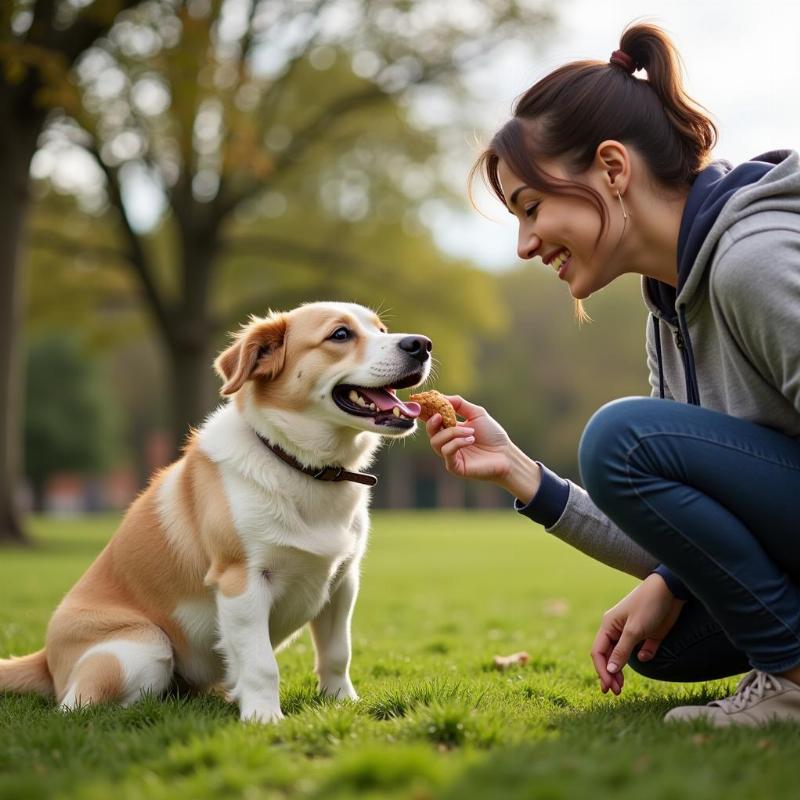If your furry friend seems to be on the receiving end of negative vibes from other dogs, you’re not alone. Many dog owners experience this frustrating situation and wonder, “Why do other dogs hate my dog?” Understanding the reasons behind canine conflict can help you address the issue and foster more positive interactions. This article will delve into the complexities of dog-dog interactions, exploring potential causes and offering practical solutions for a more harmonious dog park experience.
Decoding Canine Body Language: Why the animosity?
Dogs communicate primarily through body language, and misinterpretations can lead to conflict. Your dog might be unintentionally sending signals that other dogs perceive as threatening, even if they mean no harm. A stiff posture, direct stare, or overly enthusiastic greeting can be misinterpreted as aggression. Conversely, a fearful dog’s tucked tail and averted gaze can trigger predatory instincts in some dogs. Learning to read canine body language is crucial to understanding the root of the problem.
Socialization Shortcomings: Missed Opportunities
Early socialization plays a vital role in shaping a dog’s behavior. Puppies who haven’t had sufficient positive interactions with other dogs during their critical developmental period may struggle to navigate canine social cues later in life. This lack of experience can manifest as fear, anxiety, or inappropriate behavior, leading to negative encounters with other dogs.
Fear and Anxiety: The Underlying Culprit
Sometimes, the perceived “hate” from other dogs stems from your dog’s own fear or anxiety. A fearful dog might exhibit defensive behaviors, like barking, growling, or even snapping, which other dogs interpret as aggression. This cycle of fear and reactivity can make it increasingly difficult for your dog to have positive interactions.
Is it Really Hate? Or Something Else Entirely?
It’s important to remember that dogs don’t experience “hate” in the same way humans do. What we perceive as hatred might be fear, insecurity, territoriality, or simply a personality clash. Observing the specific interactions between your dog and others can provide valuable clues about the underlying dynamics.
Addressing the Issue: Practical Steps Towards Harmony
Professional Guidance: Seeking Expert Help
Consulting with a certified dog trainer or behaviorist is a crucial step in addressing inter-dog aggression or reactivity. They can assess your dog’s behavior, identify triggers, and develop a customized training plan to help your dog build confidence and learn appropriate social skills.
Positive Reinforcement Training: Rewarding Good Behavior
Positive reinforcement techniques, using treats, praise, and toys, can be highly effective in modifying unwanted behaviors. Rewarding your dog for calm, non-reactive behavior around other dogs can help them associate other canines with positive experiences.
Managed Interactions: Controlled Exposure
Gradually introducing your dog to other dogs in a controlled and supervised environment can help them build positive associations. Start with calm, well-socialized dogs and gradually increase the complexity of the interactions as your dog progresses.
Creating Positive Experiences: Building Confidence
 Huấn luyện chó với phương pháp củng cố tích cực
Huấn luyện chó với phương pháp củng cố tích cực
Focus on creating positive experiences for your dog around other canines. Short, successful interactions are more beneficial than long, stressful encounters. End each interaction on a positive note, even if it’s brief, to help your dog build confidence and associate other dogs with good things.
Conclusion: Fostering Positive Relationships
While it can be disheartening when other dogs seem to dislike your furry friend, understanding the underlying causes and implementing appropriate strategies can pave the way for more harmonious interactions. By focusing on positive reinforcement, managed interactions, and professional guidance, you can help your dog develop the social skills and confidence they need to navigate the canine world successfully. Remember, patience and consistency are key to achieving lasting positive change.
FAQ:
- My dog is always on leash. Could that be contributing to the problem? Yes, a dog on a leash can feel more vulnerable and may exhibit defensive behaviors.
- What if my dog is the aggressor? Consult a professional trainer immediately to address the underlying causes and prevent further incidents.
- How can I tell if my dog is fearful or aggressive? Look for subtle body language cues like tucked tail, whale eye (showing the whites of their eyes), or lip licking.
- Is it ever too late to socialize an older dog? It’s never too late, but it may require more patience and a tailored approach.
- Should I punish my dog for reacting negatively to other dogs? Punishment can exacerbate the problem. Focus on positive reinforcement and redirection instead.
- Are certain breeds more prone to inter-dog aggression? While any dog can exhibit aggression, some breeds have a higher predisposition due to genetic factors or historical breeding purposes.
- How can I find a qualified dog trainer or behaviorist? Ask your veterinarian for recommendations or search for certified professionals in your area.
Related Articles on Beautdogs.us:
About Beautdogs.us: Beautdogs.us is your premier source for all things dog-related in the US. We provide expert advice on dog breeds, care, and products, catering to both novice and experienced dog owners. From understanding dog behavior to finding the perfect products, Beautdogs.us is your trusted companion on your dog ownership journey. Contact us for personalized advice: Email: [email protected], Phone: +1 501-555-7529.